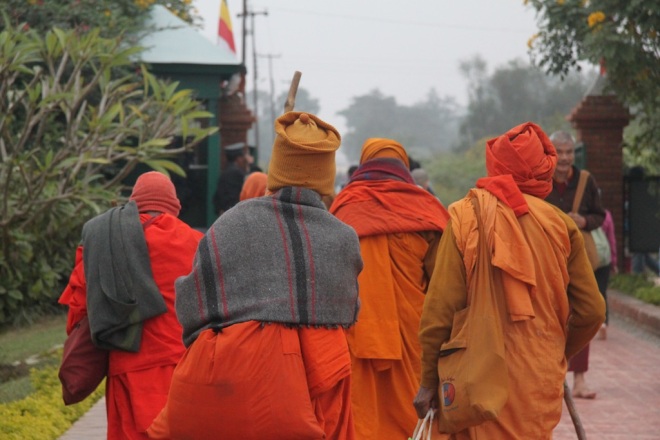
It’s the one year anniversary of the Occupy movement and the latest DP Challenge “post of the week” to come through my email was to voice our opinions on it. We were asked to take a poll with three options to choose from:
- I’m all for it and even participated in some events
- It’s a nice idea, but I don’t think protests do anything
- I don’t support it at all, and disagree with the ideas
None of these really describe how I feel, but I was surprised to find that me, a former radical, ended up choosing Number 3 as the one closest to how I feel today.
Of course I support the Occupy movement from the perspective of freedom of speech. I figure everyone has the right to protest and voice their opinions, provided they’re not violent, but usually violence does erupt in one way or another with the protesters blaming the cops and the cops blaming the protesters.
It’s the same old story and that’s why I can’t get behind the movement. As long as we continue with this dualistic thinking: us vs. them (even if “them” is only one percent), good vs. bad, right vs. wrong, we’re going to keep going in circles and ending up in the same place.
Life is more complex than that. We don’t live in a world of black and white but of nuances and shades and textures. Some right, some wrong, some things balance between the two. The Occupy movement feels rigid, unbending and myopic.
I was in India when the Occupy Wall Street movement broke out in the U.S. and so I watched it unfold in another culture, one that is not as dualistic as we are. And I tried to watch it unfold with a new set of eyes, from the perspective of my Indian friends which was mostly along the lines of “Isn’t it interesting.”
But what’s your opinion, I would ask and they would say, “Yes, yes, the protesters have a good point. But the other side has a good point too.”
I admit, I had some waves of nostalgia where I felt I could be easily swept up in the emotion of it all and out there on the streets with the crowds and the tear gas, but it didn’t last. That’s just not me any more. I can’t find it in me to tell the rest of the world how to live.
Yes, I know one percent of the population holds 99% of the wealth. Isn’t that interesting.
When I see the faces of the Occupy protesters, I see hatred, self-righteousness, anger. And I also see laughter and people just out there having a good time to be actively doing something. I’m convinced one friend joined so he could dress up in costumes and get pictures of himself. It felt more like a party than anything, but a party where one percent wasn’t invited.
It’s not that I don’t want peace. I do. But I think we’re going about it the wrong way. Peace isn’t a goal to attain, and then we have it, it will just be here. It isn’t static. Like life, it’s fluid and changing, and I truly believe the only way we will have peace, is if we find it in our own hearts first.
I’ve even heard people talk about fighting for peace. Now, that’s an oxymoron if ever I heard one.
The Zen writer, Lin Jensen, writes in an article “Doing Nothing for Peace” how he adopted the Tao Te Ching philosophy of “doing by non-doing.” At peace vigils, he sits. Just sits. That, to me, is the most productive–and profound–thing we can do because it requires an element of trust in life to unfold as it will.
Certainly, there are times to take action, but I don’t think the Occupy movement is one of them. When we try to impose our will on actions or ideas, they become brittle, and again that duality of me against you comes into play.
Another Buddhist writer, Tom Reed, in his essay, “The Next Occupy Movement: Into their Hearts,” called the Occupy movement the yang side of a plan we should all be working on. He wrote, “It seems to me that just like the Buddha, we have to become awakened to the reality that we’ll only survive a financial disaster of national scope by saying, “Enough – enough of grasping onto trying to be right all the time and trying to force others to think like us – enough of clinging to the need to blame others for our woes – enough of vengeance lust against those we perceive must be punished for our suffering.”
Both of these writers articulated better than I what I see as the duality, the split from the soul of this movement. There’s really nothing new or productive happening, and I think it’s because we’re still clinging to the same old way of thinking. My side is right and your side is wrong. We need to move past this idea that there are only two options, but many, many possibilities. Perhaps there are solutions we haven’t even considered.
And maybe the way to do this is by non-doing. When we allow peace to be a path, as Gandhi said, something unfolds that’s gentle and able to bend. Gandhi also said, “An eye for an eye just makes the whole world blind.”
So my opinion of the Occupy movement?
Isn’t it interesting?
25.572361
91.899783















